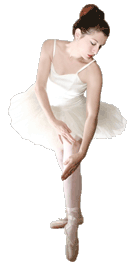At MusicalExpert, we're committed to delivering accurate, trustworthy information. Our expert-authored content is rigorously fact-checked and sourced from credible authorities. Discover how we uphold the highest standards in providing you with reliable knowledge.
What is a Dulcimer?
A dulcimer is a member of the zither family, which includes autoharps, the Chinese qin, se, and zhen, the Japanese koto and wagon, the Korean kayagum, the Vietnamese dan tranh and dan bau, the Alpine zither, and the bowed zithers. The name dulcimer comes from the words dulce melos, meaning sweet sound. Like other box zithers, the dulcimer has strings, but no keyboard. While it has no frets, it may or may not have a bridge.
Some people distinguish the dulcimer as played with hammers and the psaltery as being plucked, but others believe that you can pluck your dulcimer and hammer your psaltery. Sometimes this instrument is called the hammer or hammered dulcimer, which helps distinguish it from a different instrument called the Appalachian dulcimer, which has a different shapes and including frets.

Dulcimer hammers can be crafted from a variety of materials and with a variety of features. Their heads may be hard or soft, and the shafts, stiff or pliable. Cane, wood, bamboo, plastic, and metal are used for the shaft in various locales, and the head may be covered with cotton, felt, wood, leather, or velvet. Some players have experimented with double-headed hammers in order to play multiple pitches with one hand. Strings are often made of piano wire. Many people choose a dulcimer that is tuned to a major scale, but dulcimers with a full chromatic scale are available.
The dulcimer has found a place in family entertainment as an accompaniment to a singer, dance music, including square dancing, folk music, church music, and popular music. If the movie August Rush had been set in England during the Depression, it might have been a dulcimer, rather than a guitar, that would have been the featured instrument, as it was popular with street buskers at that time.
There is a type of large Hungarian dulcimer employed in concerts and called a cimbalom. This is a chromatic instrument with a damper pedal and differs from the small, portable Hungarian dulcimer. The cimbalom has been written for by Igor Stravinsky, Carl Orff, and Pierre Boulez. Noted players include Alex Eppler, Viktória Herencsár, Junko Sakimura, and Kálmán Balogh.
AS FEATURED ON:
AS FEATURED ON:










Discussion Comments
*A dulcimer by any other name will sound as sweet!* This article interests me because it is written from the viewpoint of the zither-type instrument called dulcimer, mentioning the Appalachian dulcimer as a footnote. In my part of the world, the American South, the term “dulcimer” is used primarily to refer to the Appalachian, or lap, dulcimer, and the zither-type instrument is always specifically designated “hammer/hammered dulcimer.”
The hammered dulcimer is the older form, but the oldest of all, the dulcimer referred to in the Old Testament, is said to have been an instrument that we know as a plucked psaltery.
The newest form of instrument to be called dulcimer is the Appalachian dulcimer, a folk instrument created by settlers in the Southern Appalachias. It is a three-or-four-stringed instrument with a long fret board. It is tuned modally, and traditionally played in a position in which it is laid across the player’s lap. It is a surprisingly versatile instrument in that it can be played in a simple style that any novice can learn within a few hours or played with a variety of techniques and flourishes to satisfy accomplished musicians.
These instruments are typically handcrafted by individuals who use a variety of woods and decorative motifs, but there are three basic shapes for the body: hourglass, teardrop, and rectangular box. In the South, there are many groups and clubs devoted to the Appalachian dulcimer, and festivals and workshops to celebrate it are becoming ubiquitous. These events often include workshops for a wide variety of instruments (hammered dulcimer, bowed psaltery, bowed dulcimer, autoharp, spoons, pennywhistle, and even steel drums), but the Appalachian, or lap, dulcimer is the featured instrument. Check out the North Georgia Foothills Dulcimer Association. This group sponsors a fall festival each year the weekend before Thanksgiving. There is even a magazine devoted to dulcimers: Dulcimer Players’ News.
The hammered dulcimer is a rectangle with multiple strings, the size depending on the number of strings. Some are small enough they are nearly square, some larger and thus obviously rectangular. The Appalachian dulcimer is much longer and narrower, often with some shaping of the body faintly reminiscent of a violin's. The Appalachian dulcimer typically has 3 strings, two of which are used in a similar manner to a guitar's and the third is left free as a drone -- kept at the same pitch throughout the song.
The sound is gentle and soothing to the ears, never loud, tends to have a kind of ringing quality on the hammered type since nothing stops the tones after the hammer strikes. If you've seen an autoharp, which was once popular in folk singing, the hammered type is generally similar. But both are usually kept flat in front of the player.
What does a Dulcimer look like?
Post your comments